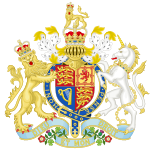- Married Women's Property Act 1870
-
Married Women's Property Act 1870 
Parliament of the United KingdomLong title An Act to amend the law relating to the property of married women. Statute book chapter 33 & 34 Vict. c.93 Territorial extent England and Wales, Northern Ireland Dates Repeal date 1 January 1883[1] Other legislation Amendments Married Women's Property Act 1870 Amendment Act 1874 Related legislation Married Women's Property (Scotland) Act 1881 Repealing legislation Married Women's Property Act 1882 Status: Repealed The Married Women's Property Act 1870 (33 & 34 Vict. c.93) was an Act of the Parliament of the United Kingdom that allowed women to legally be the rightful owners of the money they earned and to inherit property.
Contents
Background
Prior to this enactment any money made by a woman either through a wage, from investment, by gift, or through inheritance automatically became the property of her husband once she got married. This was because married women had few legal rights and were by law not recognized as being a separate legal being - a feme sole. In contrast, single and widowed women were considered in common law to be feme soles, and they already had the right to own property in their own names. A long and energetic campaign by different women's groups and some men led to the passing of this Act. For example, any copyrighted material would have the copyright pass to the husband on marriage. This would be analogous to copyright of the work done as part of the employment being owned by the employer.
The Married Women's Property Act of 1870 provided that wages and property which a wife earned through her own work would be regarded as her separate property and, in 1882, this principle was extended to all property, regardless of its source or the time of its acquisition.[2]
This essentially gave married women a separate statutory estate, and released them from coverture. It was for the first time theoretically possible for married women to live away from their husbands and support their own children themselves. However, widowed women with children, as femes soles, had already had the right to own property and support their children.
Contents of the act
The most important sections of the act were:
- 1. The wages and earning made by a wife were to be held by her for her own separate use, independently from her husband. The meaning of wages included money made from any employment, occupation, or trade, or the use of any skill such as a literary, scientific, or artistic skill that resulted in money being made. This section also covered investments made with the money earned.
- 7. This section dealt mostly with inheritance of property. A wife was allowed to keep any property she inherited from her next of kin as her own, subject to that property not being bound in a trust. She could also inherit money up to £200.
- 8. This section allowed a married woman to continue to hold rented property in her own name and to inherit rented property.
- 14. This section made married women liable to maintain her children from the profits earned from her personal property. It also continued the liability of the husband to maintain his children. In effect, this section made both parents legally liable while each spouse held separate property.
Shortcomings
The act dealt mostly with the earnings of married women and was not very specific about married women's property rights. A major loophole was that any property a woman had in her own name before marriage legally became her husband's property. However, after the marriage, she could inherit property in her own name from her next of kin. The act was not retroactive; thus, any woman who married prior to this act coming into legal effect could not recover property she had held before marriage (if she had any). This greatly limited the effect this act had on married women.
This law could also be easily be evaded, as any property put into a trust was not affected by this act.
Legacy
The act's full significance was that, for the first time, it allowed married women to legally keep their own earnings and inherit property. It also put a legal duty on married women to maintain their children alongside their husbands. It could be argued that the act paved the way towards women's right to vote, since it extended female property rights.[3]
Footnotes
- ^ Married Womewn's Property Act 1882, ss.22 & 25
- ^ Marriage, Wife Beating and the Law in Victorian England p 101
- ^ Mary Lyndon Shanley (1993). Feminism, Marriage, and the Law in Victorian England. Princeton University Press. ISBN 9780691024875. http://books.google.com/books?id=pldVMWQf-p0C&pg=PA104&dq=Married+Women%27s+Property+Act+1870+date:1970-2009&lr=&as_brr=3&as_pt=ALLTYPES&client=firefox-a#PPA104,M1.
See also
United Kingdom legislation Pre-Parliamentary legislation Acts of Parliament by states preceding
the Kingdom of Great BritainActs of the Parliament of England to 1483 · 1485–1601 · 1603–1641 · Interregnum (1642–1660) · 1660–1699 · 1700–1706
Acts of the Parliament of Scotland
Acts of the Parliament of Ireland to 1700 · 1701–1800Acts of Parliament of the
Kingdom of Great Britain1707–1719 · 1720–1739 · 1740–1759 · 1760–1779 · 1780–1800
Acts of Parliament of the United Kingdom of
Great Britain and Ireland and the United
Kingdom of Great Britain and Northern IrelandChurch of England Measures Legislation of devolved institutions Acts of the Scottish Parliament
Acts and Measures of the Welsh Assembly
Acts of the Northern Ireland Assembly / of the Northern Ireland Parliament
Orders in Council for Northern IrelandSecondary legislation Categories:- Property law
- United Kingdom Acts of Parliament 1870
- Women's rights
Wikimedia Foundation. 2010.

